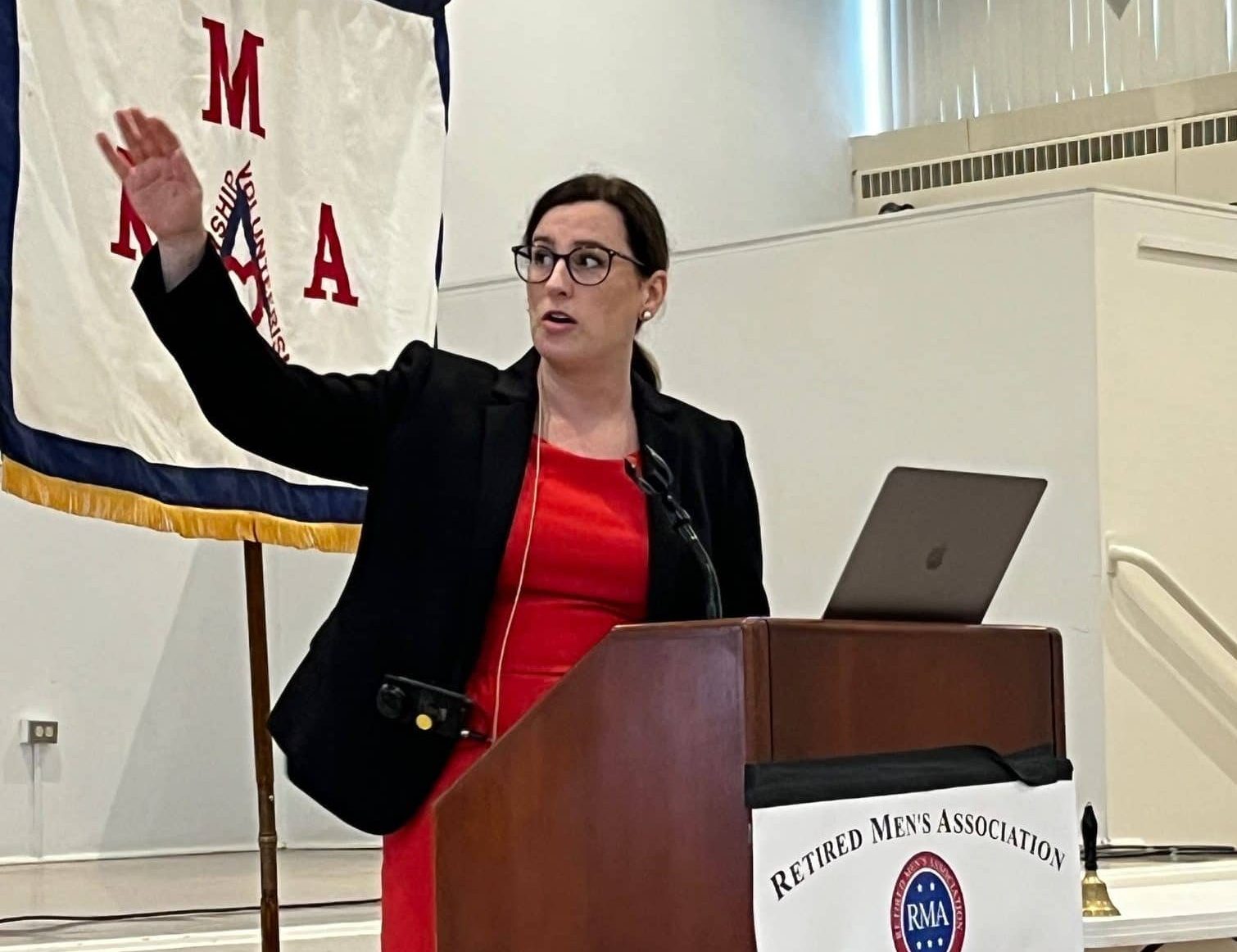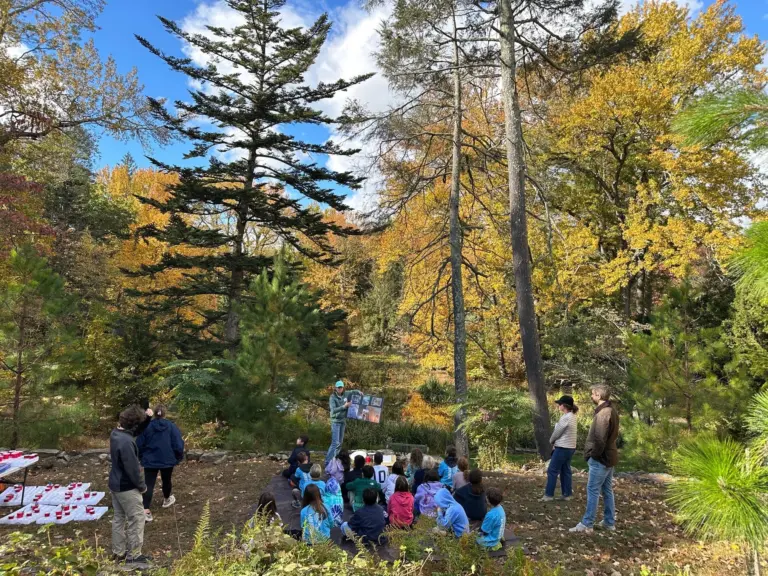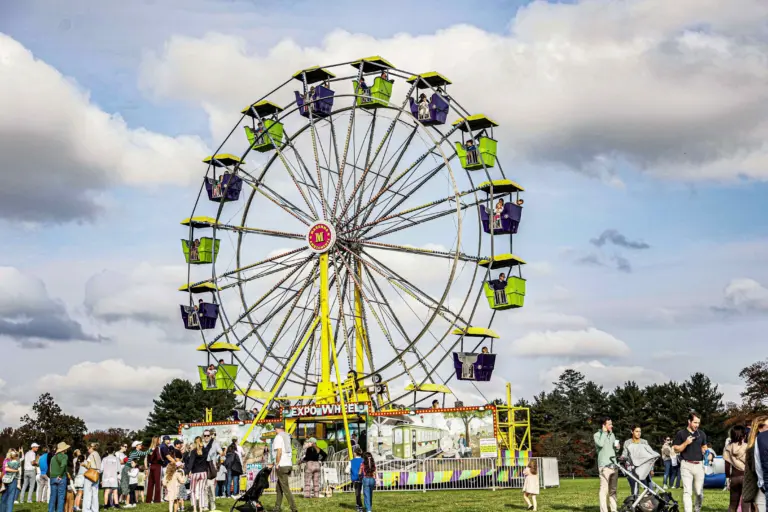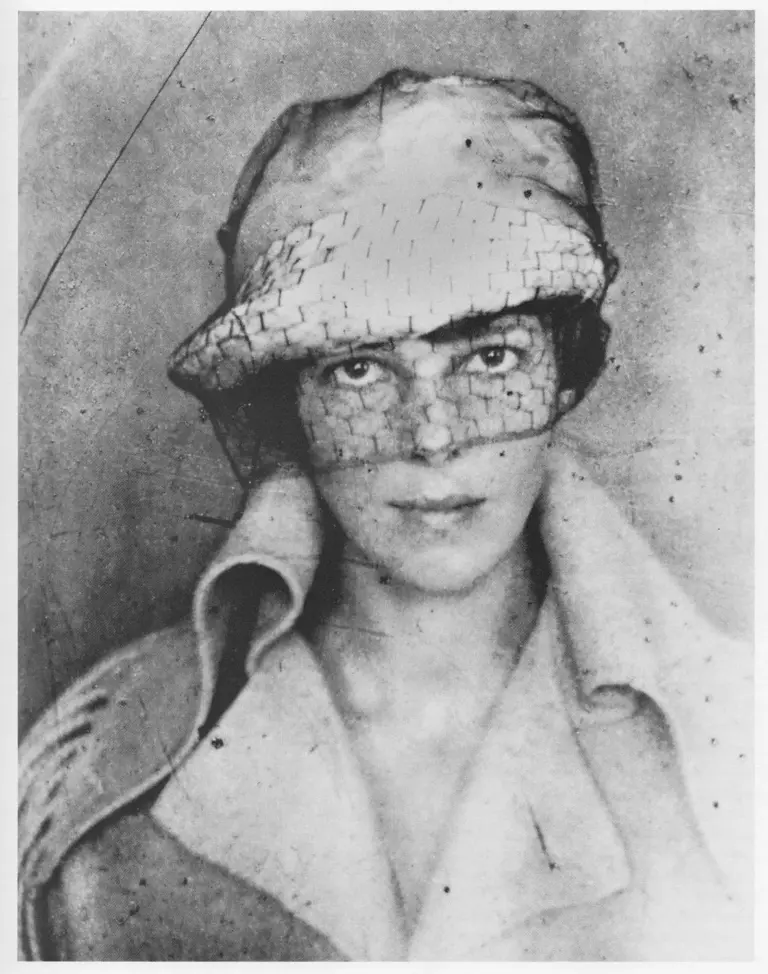
By Frank Scarpa
At the September 24 meeting of the Retired Men’s Association Peter Uhry introduced the speaker, Rochelle Thomas, director of the Greenwich Audubon Center. The world of ornithology, often perceived as the domain of quiet contemplation, pulses with urgency at the Greenwich Audubon Center. Ms. Thomas detailed her unusual path to leading one of the nation’s most historic conservation sites and outlined the organization’s aggressive strategy to combat a global avian crisis.
Ms. Thomas, who holds a bachelor’s degree from Barnard College and two master’s degrees from Columbia University, the most recent focusing on ecology, evolution, and environmental biology, explained that her journey into loving birds began relatively late in life. It took a trip to Costa Rica where she encountered the Resplendent Quetzal—a beautiful yet “goofy-looking” bird—to ignite a career change. Before long, she was a wildlife rehabber at the Wild Bird Fund in New York City, and by age 40, she was back in school pursuing avian conservation.
This dedication led her to develop the conservation tool DotDotGoose with staff from the American Museum of Natural History. This tool is now used by numerous conservationists; but to train the model, Ms. Thomas personally “dotted almost 200,000 geese,” an endeavor so demanding her advisor suggested she might need a physical therapist.
The modern urgency driving the National Audubon Society— which is celebrating 120 years of saving birds—was rooted in alarming statistics. Shortly after the founding of the National Audubon Society (1905) there was a national outrage over the fad of using bird feathers (and even live birds!) in women’s hats, resulting in the Audubon Plumage Law of 1910. Ms. Thomas referenced a 2019 paper published in Science magazine, co-authored by Ken Rosenberg, a Cornell Lab of Ornithology scientist, which delivered a wake-up call to the conservation community. This research revealed that North America had lost nearly 3 billion birds since 1970, representing a precipitous 29% decline across all bird populations, including common species often taken for granted.
In response, Audubon launched FlightPlan in 2023, built on four pillars: habitat, climate action, policy, and community building. The Greenwich Center, operating as a Conservation Action Center, is undergoing intentional transformation to become a key player in this hemispheric strategy.
The center’s commitment to education and habitat restoration is evident in several key projects. Located on the Atlantic Flyway, the center’s 686 acres across seven sites provide vital stopover and breeding habitat. The restoration of the Oneida Sanctuary, a saltwater marsh sanctuary acquired in the early 1980s and located steps from the Delamar and the Bruce Museum, is critical for coastal protection. Ms. Thomas noted that this project required installing an eight-foot deer fence to protect the newly planted flora, with plans to welcome the public inside the fence in 2027. Numerous photos of various building and rebuilding projects including two red barns and the 18th century Mead House enlivened the historical aspects of the presentation.
In 2023, the Center partnered with the Siwanoy Nation, Sustainable Connecticut, and the American Chestnut Foundation to create the Siwanoy Open Canopy Forest. This living classroom teaches visitors about Native peoples’ land management practices, transforming nearly an acre into oak hickory forest that supports a myriad of bird species.
Locally, the Center is famed for its official Hawk Watch atop Quaker Ridge, one of the highest points in town, established by volunteers in the 1960s. This continuous monitoring feeds data into the Hawk Migration Association of North America’s database. The current official hawk watcher is Ian, who was hired for his speed in tracking the migrating raptors.
During the Q&A, Ms. Thomas addressed conservation challenges. When asked about the decline in bird populations by questioner Jerry Pollack, she confirmed that in the U.S., the number one cause of bird death—estimated at 2.6 billion birds a year—is outdoor cats. She also elaborated on the devastating impact of collisions, noting that New York City and Chicago count about 100,000 bird deaths annually due to windows. She cited the retrofitting of the Javits Center in New York, a project led by Bruce Fell and his architects, which reduced collisions by 97% by incorporating bird-friendly glass.
Ms. Thomas concluded by encouraging the public to visit the Center, perhaps to sit on the Hawk Watch lawn and enjoy the migration show. She hoped that by stopping by, visitors might not only learn to love birds, but also learn to love the Greenwich Audubon Center, its lands, its history, and its community.
The RMA’s next presentation, “Kidney Disease – A Tale of Two Miracles” by Alan S. Kliger, MD, is scheduled for 11 AM on Wednesday, October 8, 2025. RMA presentations are held at Christ Church Greenwich, Parish Hall, 254 E. Putnam Avenue, Greenwich, CT 06830.
In this informative presentation Dr. Kliger discusses the sea-change in keeping people alive with new technologies called dialysis and organ transplantation, which were introduced widely 60 years ago, and the modern miracle of new designer medicines that can stop kidney disease in its tracks.
Dr. Kliger is Clinical Professor of Medicine, Yale School of Medicine. He served as Sr. VP Medical Affairs for Yale New Haven Health System, and was its Chief Quality Officer. He also served the Hospital of St. Raphael, New Haven as Chairman of the Department of Medicine, and later its Chief Medical Officer. Dr. Kliger served as the Chair of the American Society of Nephrology’s Excellence in Patient Care Advisory Committee and has co-authored more than 190 publications in peer-reviewed journals, with particular interest in dialysis, quality measurement, quality improvement and patient safety.
Dr. Kliger received his medical degree from SUNY Upstate Medical University in Syracuse, NY, and is Board Certified in nephrology and internal medicine. In 2025, he was a Medal of Excellence awardee from the American Association of Kidney Patients. He has won numerous other awards, including from the National Kidney Foundation, and in their words “is nationally recognized for his clinical expertise in kidney function and care, and for his commitment to patient safety and to improving quality of care.”
To stream the presentation by Alan S. Kliger at 11 AM on Wednesday, October 8, click on https://bit.ly/30IBj21. This presentation will also be available on local public access TV channels, Verizon FIOS channel 24 and Optimum channel 79.
Note: The views expressed in these presentations are those of the speakers. They are not intended to represent the views of the RMA or its members.
RMA speaker presentations are presented as a community service at no cost to in-person or Zoom attendees, regardless of gender. Any member of the public who would like to receive a weekly email announcement of future speakers should send a request to members@greenwichrma.org. The RMA urges all eligible individuals to consider becoming a member of our great organization, and thereby enjoy all the available fellowship, volunteer, and community service opportunities which the RMA offers to its members. For further information, go to https://greenwichrma.org/, or contact info@greenwichrma.org.




